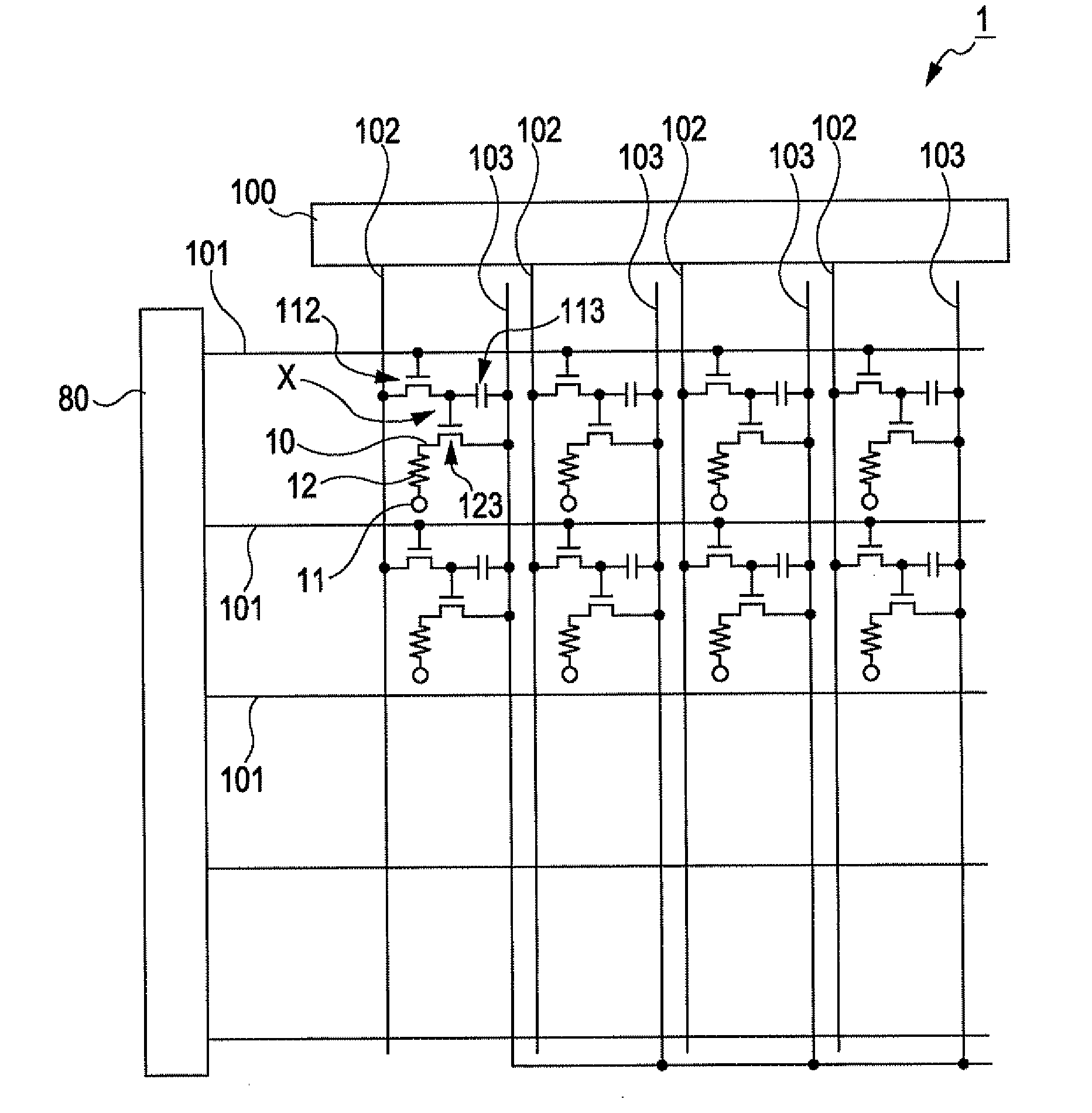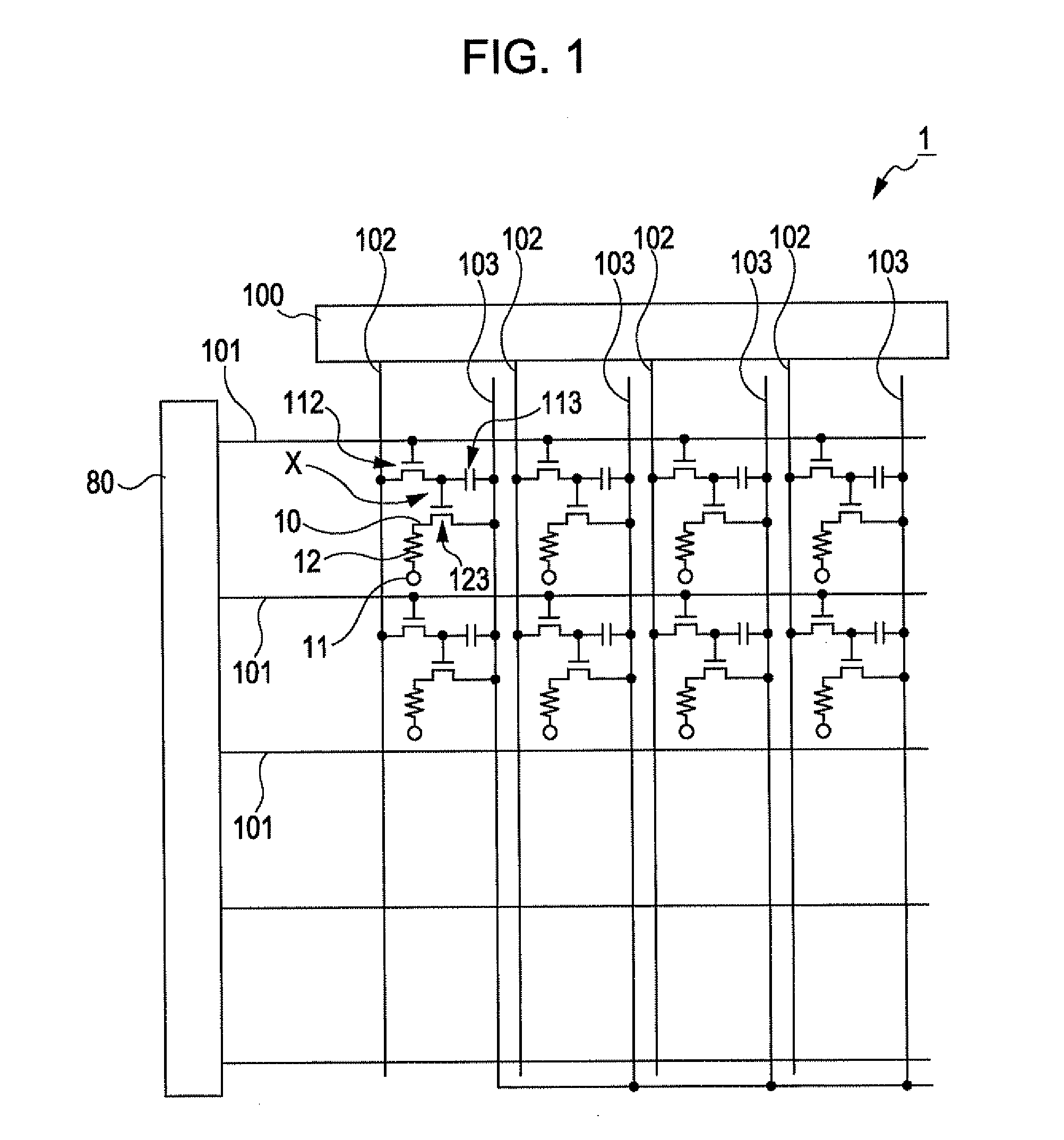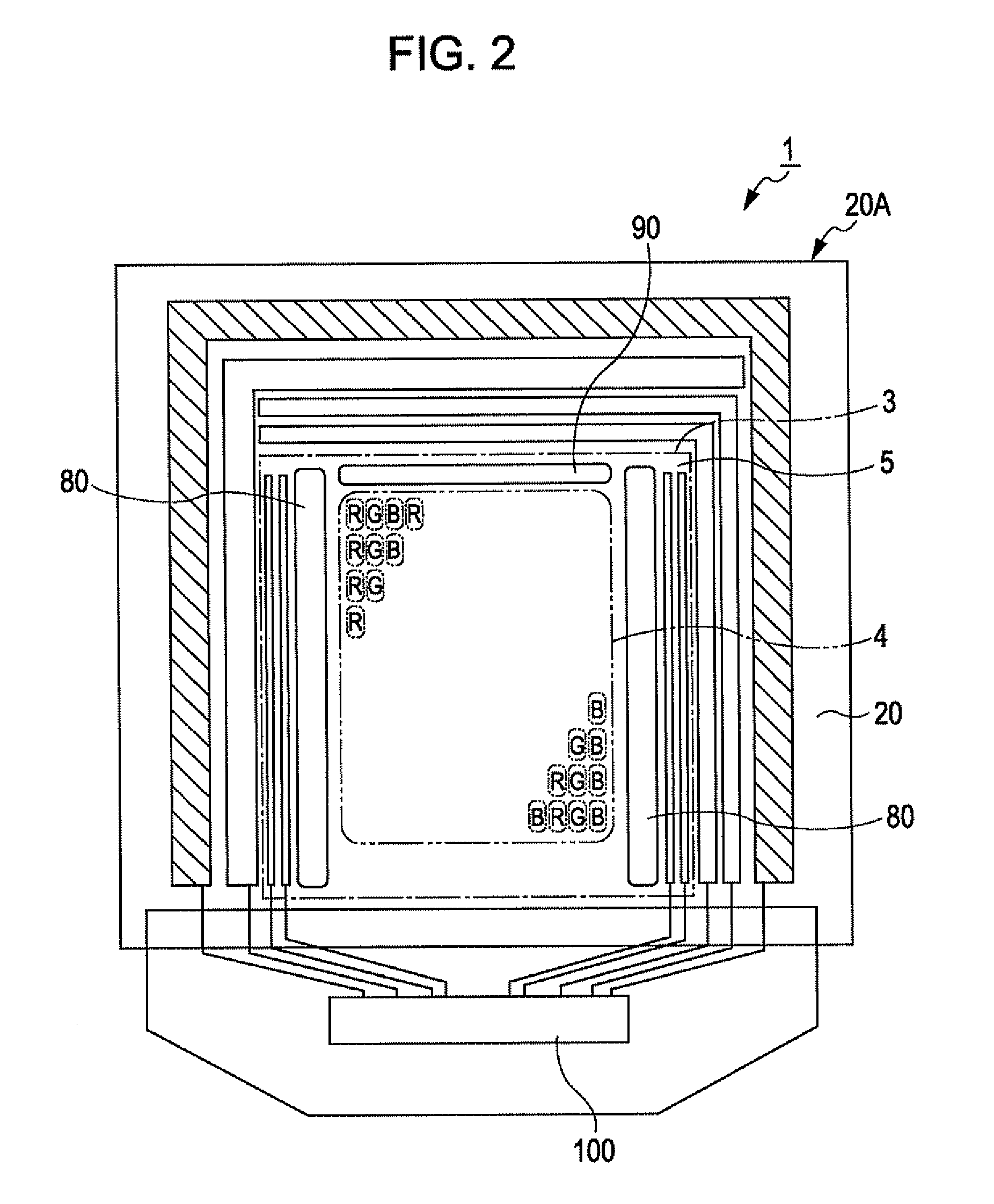Organic electroluminescent device, method for manufacturing the same, and electronic apparatus including the same
a technology of electroluminescent devices and electronic devices, which is applied in the direction of discharge tubes/lamp details, luminescent screens of discharge tubes, synthetic resin layered products, etc., can solve the problems of short life light-emitting elements, air bubbles trapped in steps or uneven portions, and easy deterioration, so as to prevent deterioration and improve the effect of light-emitting elements
- Summary
- Abstract
- Description
- Claims
- Application Information
AI Technical Summary
Benefits of technology
Problems solved by technology
Method used
Image
Examples
first embodiment
of Organic EL Device
[0041]An organic electroluminescent device (hereinafter referred to as organic EL device) will first be described according to a first embodiment of the invention.
[0042]FIG. 1 is a schematic representation of the wiring structure of an organic EL device 1 according to the first embodiment.
[0043]The organic EL device 1 is of active matrix type using thin-film transistors (hereinafter referred to as TFTs) as switching elements. In the organic EL device 1, the wiring is constituted of a plurality of scanning lines 101, a plurality of signal lines 102 extending perpendicular to the scanning lines 101, and a plurality of power lines 103 extending parallel to the signal lines 102. Pixel regions X are formed in the vicinities of the respective intersections of the scanning lines 101 and the signal lines 102.
[0044]The organic EL device may not be of active matrix type using TFTs, and may be of matrix type using a simple element substrate. Such a matrix-driven organic EL ...
second embodiment
of Organic EL Device
[0155]Another organic EL device 2 will now be described according to a second embodiment. The same parts in the drawings of the present embodiment are designated by the same reference numerals as in the first embodiment, and the same description is omitted. FIG. 7 is a schematic sectional view of the organic EL device 2.
[0156]The organic EL device 2 of the second embodiment is different from the organic EL device 1 of the first embodiment in that the black matrix layer 32 covers the outer region of the sealing substrate 31 corresponding to the width of the outer region sealing layer 33 in order to prevent light from leaking through the frame zone (non-light emitting region) D in the outer region of the device, and that the color layers 37 have a larger thickness than the black matrix layer 32.
[0157]By covering the outer region of the sealing substrate 31 corresponding to the width of the outer region sealing layer 33 with the black matrix layer 32 as shown in FIG...
PUM
| Property | Measurement | Unit |
|---|---|---|
| Thickness | aaaaa | aaaaa |
| Pressure | aaaaa | aaaaa |
| Viscosity | aaaaa | aaaaa |
Abstract
Description
Claims
Application Information
 Login to View More
Login to View More - R&D
- Intellectual Property
- Life Sciences
- Materials
- Tech Scout
- Unparalleled Data Quality
- Higher Quality Content
- 60% Fewer Hallucinations
Browse by: Latest US Patents, China's latest patents, Technical Efficacy Thesaurus, Application Domain, Technology Topic, Popular Technical Reports.
© 2025 PatSnap. All rights reserved.Legal|Privacy policy|Modern Slavery Act Transparency Statement|Sitemap|About US| Contact US: help@patsnap.com



